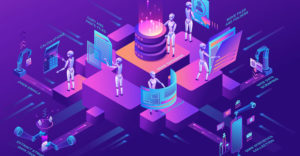Edge computing has become an increasingly important part of the IT ecosystem, with more demand than ever for computing power to be on hand, accessible, and instantaneous.
Even as operations as diverse as factories and hospitals are moving at least portions of their daily computational processes out of the centralized cloud and into various edges, edge computing for many people remains a mysterious concept.
To provide some clarity and insight, TechNewsWorld spoke with several experts to detail what edge computing is, why it’s needed, and where it’s going.
New IT Footprint
“Edge is a strategy to deliver insights and experiences at the moment they’re needed,” Nick Barcet, senior director of technology strategy for Red Hat, told TechNewsWorld.
“It turns the concept of cloud computing on its head,” he continued. “Where traditional cloud deployments are about centralizing on a single infrastructure that can scale up as business needs dictate, edge is focused on scaling out geographically.
“Edge computing is essentially the newest IT footprint. It blends together pieces from previous footprints to create infrastructure aimed at tackling specific customer demands that traditional IT models cannot address.”
Raffi Elliott, head of content and partnerships for Mutable, explained that “Edge computing is a distributed computing architecture that aims to solve some of the inherent deficiencies of current cloud computing infrastructure — namely high latency and bandwidth costs, by moving compute as close as possible to the end-users on the edge of the network.”
“By moving the source of remote computing resources towards those who use it, the edge cloud reduces the distance that data must travel between a user’s device and the data center, which is a key requirement for latency-sensitive applications while reducing bandwidth strain on networks,” he added.
Finding the Edges
The edge can exist anywhere computing power is needed immediately and without fail.
“Over the past year or two, we’ve seen the rise of applications that push enterprise IT to the literal edge, from self-guided vehicles to artificial intelligence, to vast sensor networks that rely on 5G for instant connectivity and emergency reaction times,” said Red Hat’s Barcet. “The intent to bring computing resources closer to the end-user has never been more pertinent.”
As the pandemic has pushed people further to various edges around traditional work and business structures, it has also heightened the need for edge computing.
“While edge computing has been acknowledged as the next step in the evolution of cloud computing for some time now, the Covid-19 pandemic has greatly accelerated and demonstrated its necessity,” observed Elliott.
“Rather than shaping tomorrow’s computing landscape, it’s already shaping today’s, he continued.
“The types of internet applications that we’re envisioning in the near future, such as AI-powered manufacturing, telemedicine, self-driving cars, and the internet of things, are quite data-intensive and require massive amounts of computing power, both of which are of limited supply on most of the devices we have today.”
Economic Advantages
A large part of what’s driving the push for edge computing is the need to save money, particularly in relation to uploading and downloading large amounts of data.
“The factor driving the need for edge computing today seems to be the processing of data closer to where it gets generated simply because there isn’t enough bandwidth to send it up to the cloud,” said Amar Kapadia, co-founder and CEO of Aarna Networks. “Even if there were enough bandwidth, it probably would not be cost-effective to send so much data to the cloud. A great example of this would be video analytics on-premises.”
Just about all industries have their own particular edges. They’re finding where those edges are and building localized processing power where it’s needed most.
“Edges can come in various forms — data center edge, 5G MEC or telco edge, which are small edge clouds deployed by mobile operators, and IoT edge, which has the compute in an IoT device,” Raj Nair, CEO of Avesha, told TechNewsWorld.
“There can be industry-specific edges like retail edge, medical edge, manufacturing edge, or gaming edge, which serve business-specific compute and workload needs for that use case,” he said.
Another driver behind edge computing is the need for consistent processing, even in the fact of power, internet, or other disruptions.
“Edge devices reduce the risk of disruption due to outages, security vulnerabilities inherent in the cloud, as well as long response times during high usage spikes,” Doug Slattery, CEO and founder of SYBor, told TechNewsWorld.
“A well-designed edge network can also provide redundancy and minimize potential single points of failure if a catastrophic event occurs at one location. Edge computing devices can provide a distributed private network for suitable emerging technologies, such as Blockchain, for example,” he noted.
Edging Toward the Future
The edge will likely become an increasingly powerful place as it harnesses AI and machine learning and interfaces with real-time problems.
“The need for edge computing is only going to grow as workloads at the farthest-flung reaches of the network become more complex and compute-intensive,” said Barcet. “With connected cars, smart manufacturing floors, drone delivery systems, and more, the importance of edge is all but solidified.
“What’s next is for the edge computing ecosystem to continue delivering innovation around accessibility, scalability, and security, to lower the barriers of entry for organizations looking to build an edge strategy, and to improve the overall security posture of edge footprints in the face of evolving threats. It is not just about delivering software, but also providing the capabilities to manage it at scale.”
Many of the computing functions that drive daily life will continue to be pulled down from the cloud as edge computing becomes omnipresent.
“We believe that the future of edge computing is in autonomous infrastructure, with computing becoming hyper-local, distributed, and ubiquitous,” explained Avesha’s Nair. “Managing, right-sizing, and doing root cause analyses of such distributed infrastructures is a challenge that enterprises have to face.”


























































